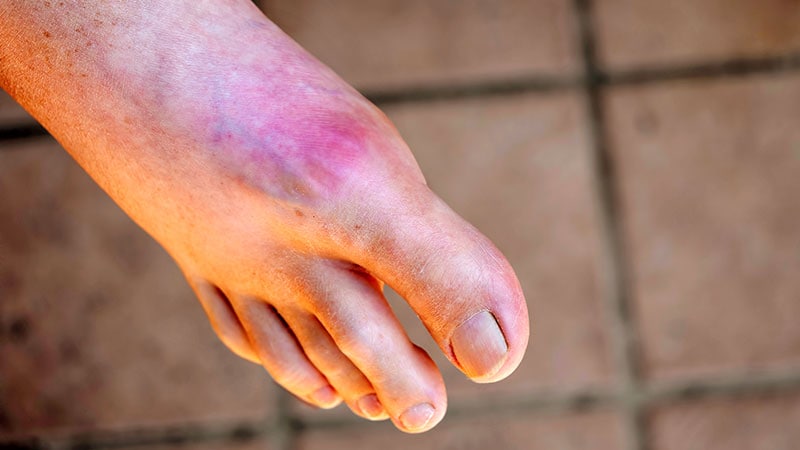According to a meta-analysis published in the journalInflammopharmacology, oral prednisolone (30-35 mg/day) and NSAIDs (such as indomethacin, 50-100 mg/day or naproxen, 500 mg/day) have comparable short-term and long-term effects in reducing pain in patients with acute gout, with oral prednisolone being slightly safer than first-line NSAIDs.
For this meta-analysis, researchers conducted a literature search across PubMed, Web of Science, clinicaltrials.gov, and other databases and identified 3 double-blind, randomised controlled trials (n=584) comparing the safety and efficacy of oral prednisolone vs NSAIDs in patients with acute gout.
The results showed that oral prednisolone was equally effective to NSAIDs in reducing pain scale with activity (difference in means, 0.259; P =.777) and at rest (difference in means, −0.502; P=.825) during the first 2-6 hours after treatment. Similar results were observed in pain scale with activity (difference in means, −0.552; P=.183) and at rest (difference in means, −0.164; P=.281) during the follow-up of 4-14 days after treatment. Prednisolone did not increase the rate of patients with any adverse events (risk ratio [RR], 0.765; P=.0275) but reduced the drug withdrawal rates because of adverse events vs NSAIDs (RR, 0.127; P=.024).
“Our findings are in line with the most recent guidelines from the American College of Rheumatology and European League against Rheumatism recommending oral corticosteroids as the first-line option for the treatment of acute gout,” the authors said. They call for further research on long-term efficacy and safety of prednisolone in comparison with other systemic corticosteroids and other NSAIDs.


